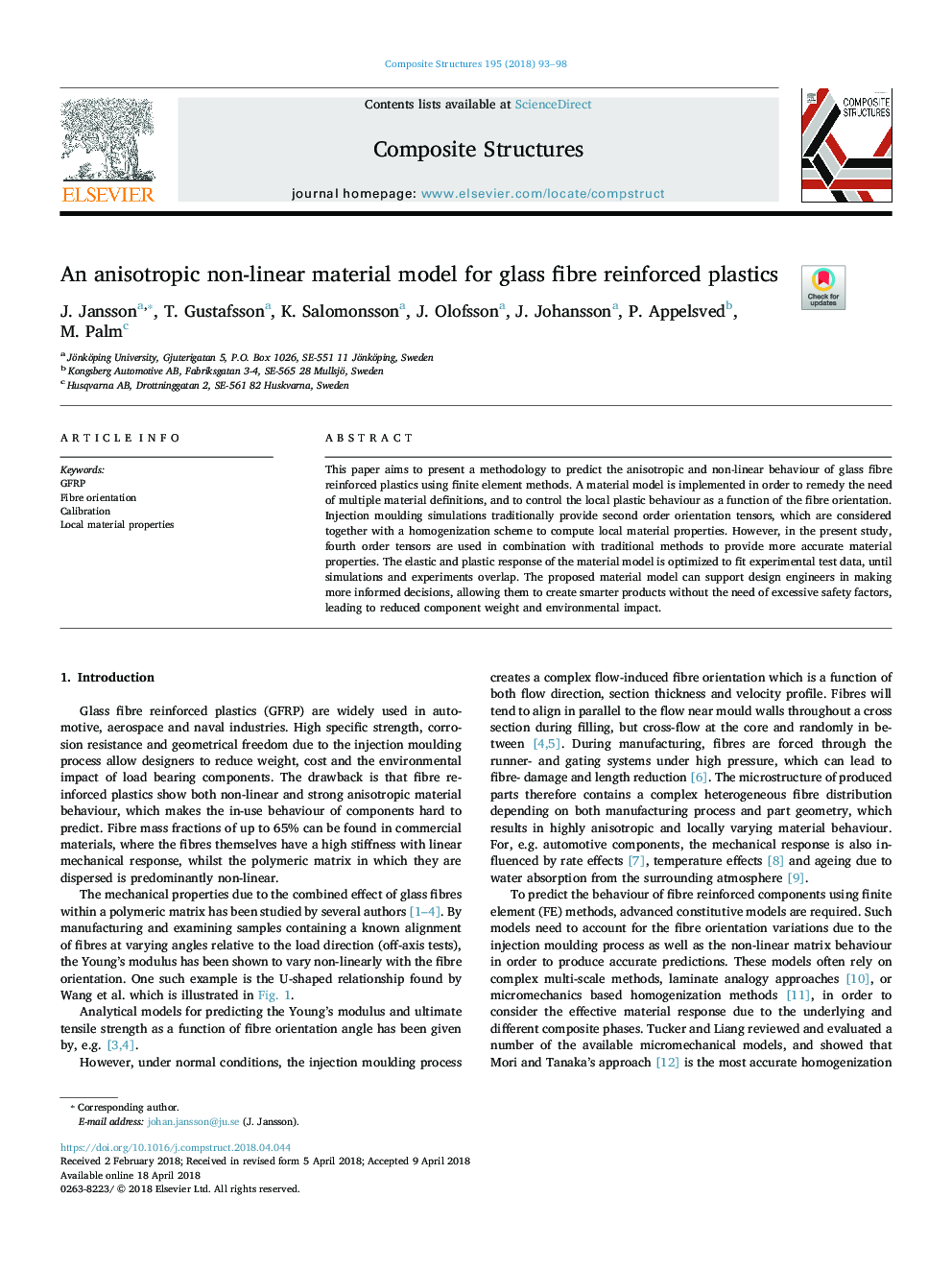| Article ID | Journal | Published Year | Pages | File Type |
|---|---|---|---|---|
| 6703377 | Composite Structures | 2018 | 6 Pages |
Abstract
This paper aims to present a methodology to predict the anisotropic and non-linear behaviour of glass fibre reinforced plastics using finite element methods. A material model is implemented in order to remedy the need of multiple material definitions, and to control the local plastic behaviour as a function of the fibre orientation. Injection moulding simulations traditionally provide second order orientation tensors, which are considered together with a homogenization scheme to compute local material properties. However, in the present study, fourth order tensors are used in combination with traditional methods to provide more accurate material properties. The elastic and plastic response of the material model is optimized to fit experimental test data, until simulations and experiments overlap. The proposed material model can support design engineers in making more informed decisions, allowing them to create smarter products without the need of excessive safety factors, leading to reduced component weight and environmental impact.
Keywords
Related Topics
Physical Sciences and Engineering
Engineering
Civil and Structural Engineering
Authors
J. Jansson, T. Gustafsson, K. Salomonsson, J. Olofsson, J. Johansson, P. Appelsved, M. Palm,
